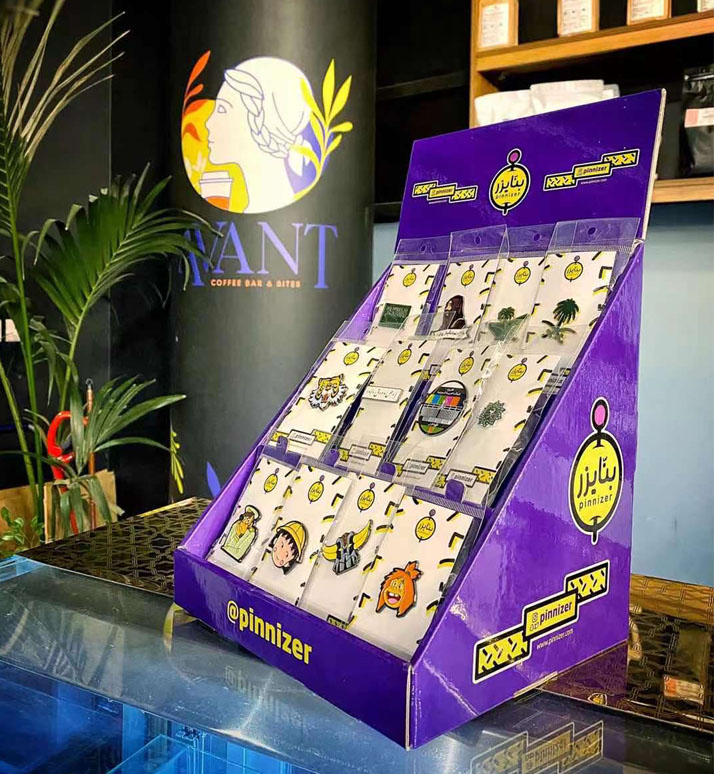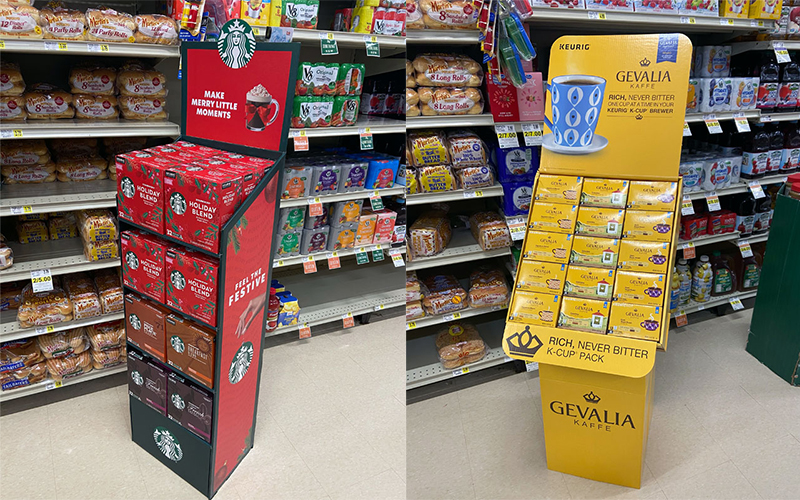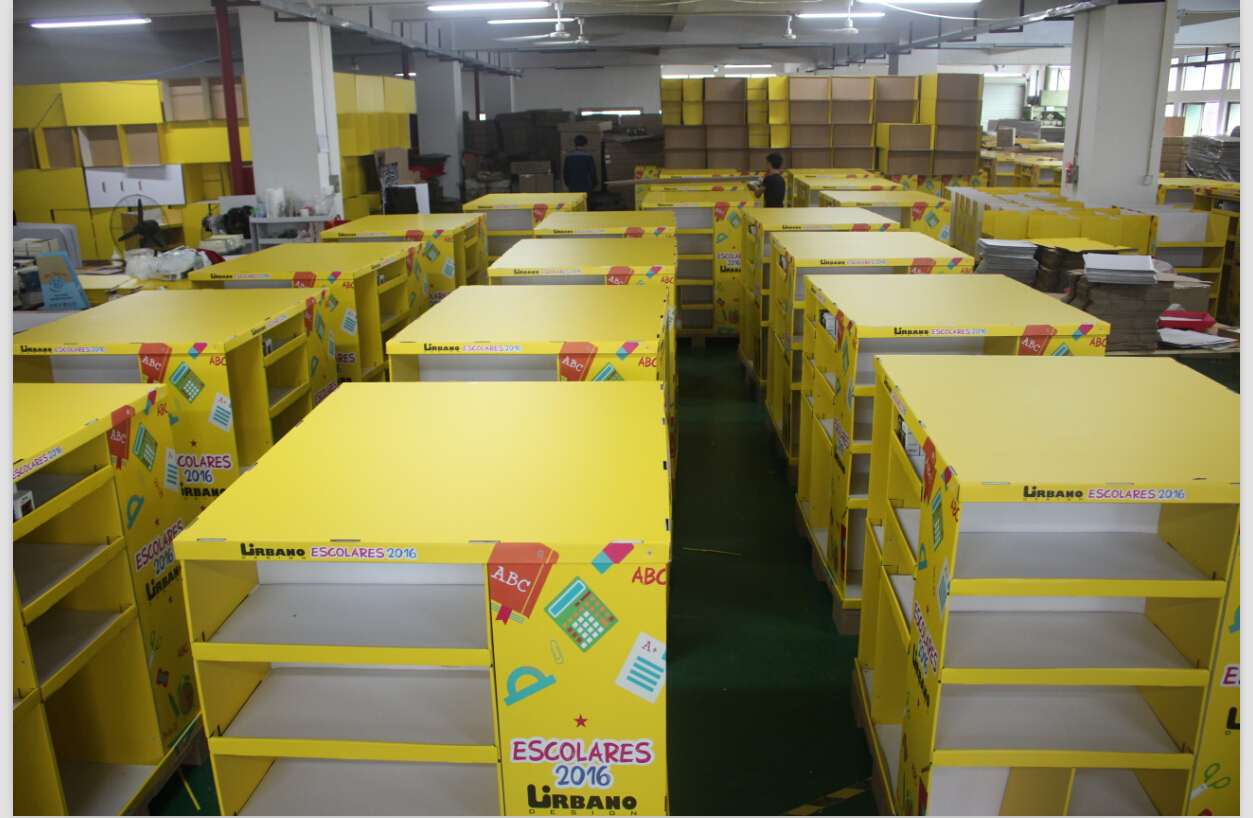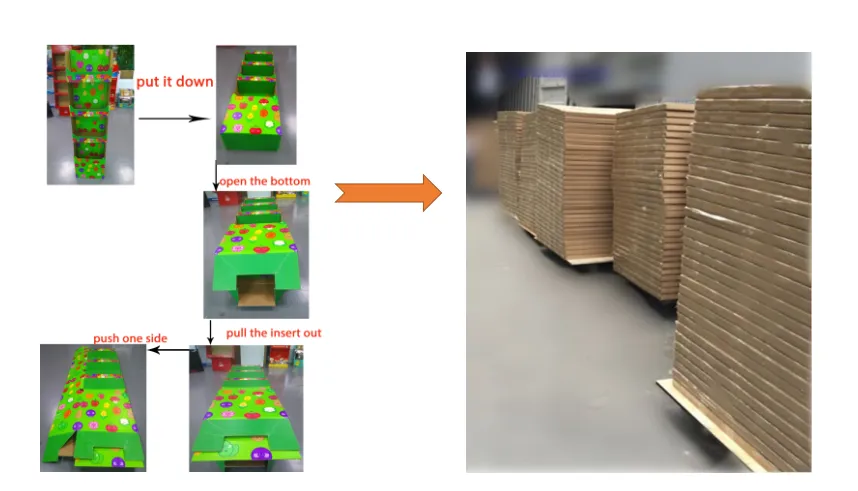Ordering custom displays can feel overwhelming. You worry about costly mistakes and delays. I will guide you through the key points to ensure your project succeeds from the start.
Before ordering a custom cardboard display, you must understand four key areas: design application, material benefits, shipping logistics, and structural integrity. Getting these right ensures your display is effective, arrives safely, and is easy to set up in-store, maximizing your return on investment.

Getting your product noticed in a crowded store is tough. You need a display that not only looks great but also works perfectly from production to the retail floor. Over my 16 years in this industry, I've seen what works and what doesn't. To help you succeed, I've broken down the most important questions my clients ask. Let's walk through them together so you can order your next display with confidence.
How to put designs on cardboard?
You worry your display's colors won't match your brand. Mismatched colors can damage your brand's image and make your product look cheap. Understanding the printing process ensures a perfect result.
Designs are applied to cardboard using printing methods like offset or digital printing. At Lddisplay, we use an advanced color management system. This ensures your brand colors are reproduced perfectly for a stunning visual effect that grabs customer attention.
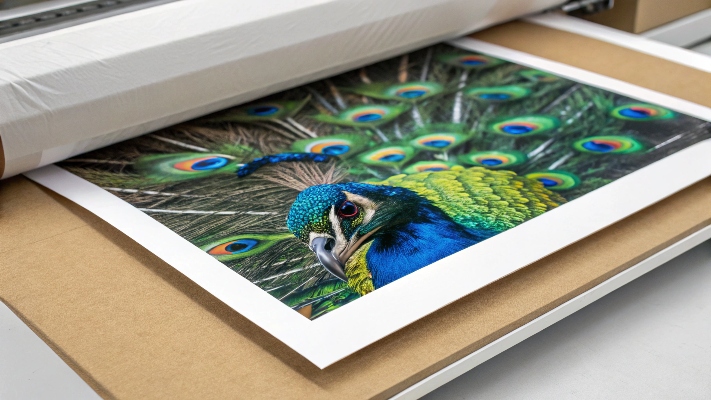
Getting the design right is about more than just a nice picture. It's about reproducing your brand identity with precision. After all, your display is a silent salesperson on the retail floor. The color must be perfect. Over the years, I've learned that investing in the right technology is the only way to guarantee this for my clients.
Choosing the Right Printing Method
The first step is picking how to print your design. The two most common methods are offset and digital printing. Each one has its own strengths, and the best choice depends on your project's needs.
| Feature | Offset Printing | Digital Printing |
|---|---|---|
| Best For | Large volume orders (1000+ units) | Small to medium volume, prototypes |
| Color | Extremely high quality, precise Pantone matching | Very good quality, best for CMYK |
| Cost | Lower cost per unit on large runs | More cost-effective for small runs |
| Flexibility | Less flexible, requires printing plates | Highly flexible, easy to change designs |
The Importance of Color Management
A great design can be ruined by poor color matching. I've seen it happen. That is why we invested heavily in a state-of-the-art color management system1. It allows us to perfectly match the colors on your display to your product's branding. We can match specific Pantone (PMS) colors, which are essential for brand consistency. This system ensures that the final display gives customers the perfect visual experience you intended.
What makes cardboard good for packaging?
You need packaging that is both strong and eco-friendly. Choosing the wrong material can lead to damaged products or hurt your brand’s green reputation. Cardboard offers the perfect balance.
Cardboard is excellent for packaging because it is lightweight yet surprisingly strong. It is also highly customizable, cost-effective, and sustainable. This unique combination provides superior protection while supporting your brand’s environmental goals.
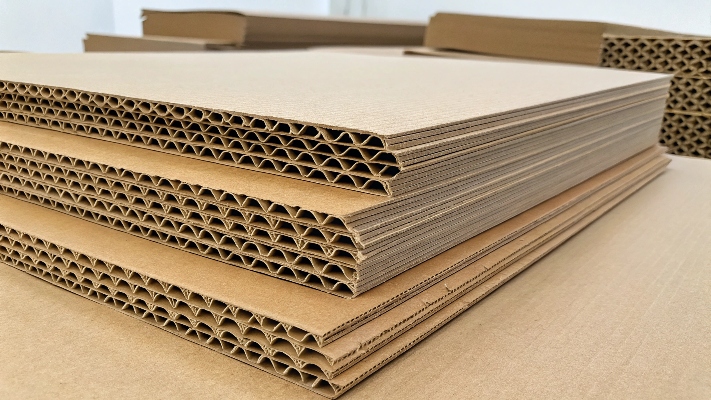
I have worked with cardboard for 16 years, and I am still impressed by its versatility. It's more than just a box. It's a smart solution that meets the demands of modern business. Clients are increasingly asking for sustainable options2, and cardboard is one of the best answers we have. It protects the product and the planet.
Key Advantages of Cardboard
Cardboard is the go-to material for displays and packaging for several good reasons. It offers a blend of performance and practicality that is hard to beat.
- Strength-to-Weight Ratio: Corrugated cardboard gets its strength from the fluted layer inside. This structure makes it very strong without being heavy. This saves money on shipping while protecting your products.
- Customizability: Cardboard is incredibly easy to work with. We can cut, fold, and print on it to create almost any shape or design you can imagine. This allows for truly unique displays that stand out.
- Cost-Effectiveness: The raw materials for cardboard are inexpensive, and the manufacturing process is efficient. This makes it a very budget-friendly option, especially for large orders.
- Sustainability: This is a huge benefit. Cardboard is typically made from recycled materials and is fully recyclable itself. Using cardboard shows your customers you care about the environment.
How is cardboard shipped?
Your beautiful new displays arrived crushed and unusable. This wastes your entire investment and throws your marketing campaign off schedule. Proper shipping methods are absolutely essential for success.
Cardboard displays are usually shipped flat-packed to save space and reduce freight costs. We ensure safe delivery by using secure packaging, waterproof testing, and palletizing for overseas shipments to prevent any damage.
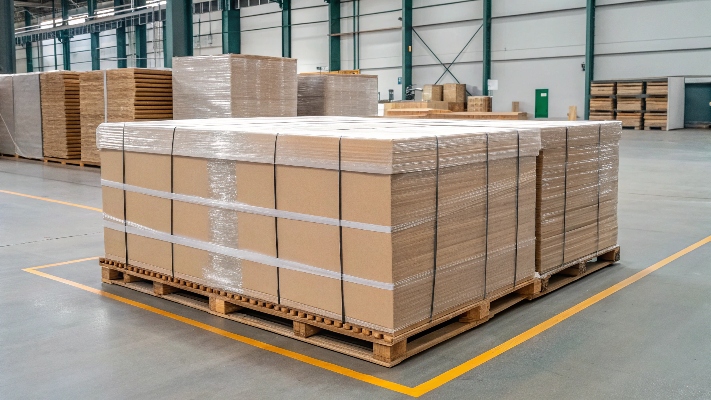
For me, a project isn't finished until the displays are safely in the client's hands. Shipping, especially overseas, is a critical step. Damage during transit is a nightmare for everyone. That is why we have developed a careful process to protect every order. Making sure your displays arrive in perfect condition is just as important as designing them.
Our Commitment to Shipping Safety
Every successful overseas delivery depends on transport security. We have built our reputation on it. We take several specific steps to protect your order from the moment it leaves our factory.
Packaging Methods
How we pack your order makes a huge difference. We offer different options to fit your needs and budget. Palletizing is one of the best ways to protect displays. We stack the flat-packed displays neatly on a pallet, then shrink-wrap everything tightly. This creates a stable block that is much less likely to be damaged. I can even show you pictures of the difference between palletized and non-palletized shipments.
Pre-Shipment Testing
Before anything goes out the door, we perform a waterproof test. We wrap the shipment and test it to make sure it can withstand moisture. This simple step can prevent a lot of problems, especially for shipments traveling by sea.
Innovative Protection
We also developed a special 3D shipping protection card3. This is a custom-designed piece of cardboard that we place at critical points around the shipment. It acts as a bumper, absorbing impacts and protecting the corners and edges of your displays. It is a small innovation that has made a big difference in preventing damage.
How to make a cardboard display stand up?
Your retail partners complain the displays are a nightmare to assemble. They waste valuable staff time or force you to hire extra help. Smart structural design turns assembly into a simple task.
A cardboard display stands up using clever structural design elements like interlocking tabs, internal support panels, and a stable base. Our innovation at Lddisplay is creating designs that are not only strong but also incredibly easy to assemble.
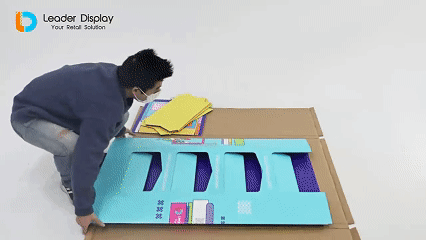
I have heard so many stories about displays arriving with complex instructions that no one can figure out. The result is a weak or crooked display that looks terrible. This problem inspired me to find a better way. A display is useless if it cannot be assembled correctly and quickly in a busy retail environment4.
The Challenge of Complex Assembly
The biggest complaint I hear from clients about other displays is the difficulty of assembly. It takes too much time and costs too much in labor. When retail staff are confused and frustrated, they often give up, and the display never even makes it to the sales floor. Or, they build it wrong, and it collapses. This is a complete waste of your investment.
Our Easy-Assembly Innovation
At Lddisplay, we decided to solve this problem. We invested our resources into developing simple, intuitive assembly designs. Our goal was to create displays that could be put together in minutes, or even seconds, without any tools or confusing instructions. After a lot of work, we succeeded. We now have display designs that are so simple, a single person can assemble one in just two seconds. This innovation saves our clients significant labor costs. It also ensures the display is built correctly every time, so it stands strong and looks perfect on the retail floor, ready to sell your product.
Conclusion
Understanding design, materials, shipping, and assembly is key. Get these four things right, and your custom cardboard display will be a powerful, cost-effective tool for your business's success.
-
Learn how color management systems ensure accurate color reproduction for branding. ↩
-
Discover eco-friendly packaging solutions that align with modern business practices. ↩
-
Learn about innovative shipping solutions that protect your displays from damage. ↩
-
Learn about the common challenges faced by displays in retail settings and how to overcome them. ↩



